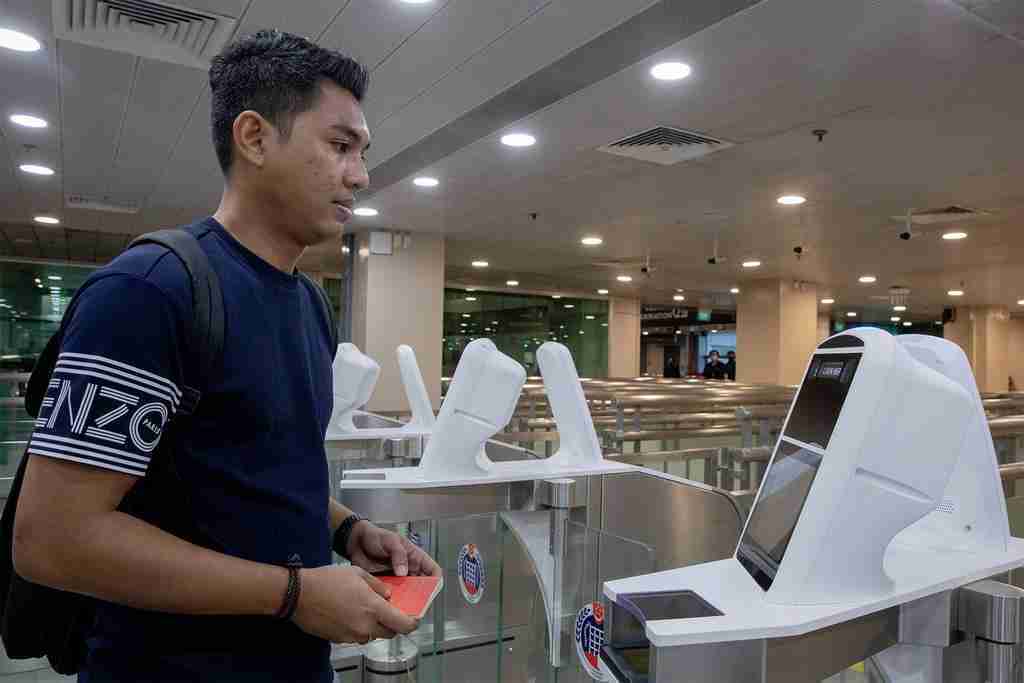
SINGAPORE — From 2022, Singapore residents will be able to pass through immigrations here without using their passports, the Immigration and Checkpoints Authority (ICA) said on Wednesday (Oct 28).
Plans for this new clearance concept comes after trials at Changi Airports Terminal 4 started late last year.
Deputy Superintendent (DSP) Melvin Tiang, who is deputy head of operations development at ICA, said of the new system: “That means that for residents, including Singapore citizens, when they use the (immigration) gates, they do not need to present a passport… all they need to do is walk into the gates.
“Once (their biometrics are) authenticated, they can move out of the gate and onto their journey.”
This passport-free concept will be rolled out progressively from 2022, and in the meantime, ICA has already made steps towards this by replacing fingerprint scanning with iris and facial scans.
Also Read: Data Storage Security Standards: What Storage Professionals Need To Know
Since July, the use of such scans has been implemented in all passenger halls at Singapore’s air, land and sea borders.
Passengers will still have to scan their passports at the automated gates, but the rest of the process will be contactless, with travellers having to face an iris and facial scanner.
The iris and facial scanning system, which ICA demonstrated to the media at Woodlands checkpoint on Wednesday morning, comes after Changi Airport announced in July the use of the same system at Terminals 1 and 3.
This will reduce the contact points made during the immigration process.
“Iris and facial scans are performed without physical contact to the machines and offer a more hygienic, secure and efficient way of clearance,” DSP Tiang said.
He added that while the system was already in the works with a pilot in 2018, the Covid-19 pandemic had accelerated its widespread implementation.
“ICA’s transformation plan has been an ongoing effort… the Covid-19 situation gave us more space and time to experiment with some of the concepts that we have, as well as give us more time to engage with our staff and to train them up so that they can adapt to the new clearance concept.”
For travellers who are unsuccessful in their iris and facial scans, or who have yet to enrol their iris and facial biometrics with ICA, their fingerprints will be scanned instead.
Also Read: IT Governance Framework PDF Best Practices And Guidelines
Travellers are also advised not to wear any headgear or accessories that obstruct their iris and facial images. These include sunglasses, caps as well as coloured or patterned contact lenses.
Face masks must also be removed during immigration clearance, ICA added.
Singapore citizens, permanent residents, long-term pass holders and international travellers under ICA’s Frequent Traveller Programme who have enrolled their iris and facial biometrics with ICA are eligible for this new mode of clearance.
Since 2017, citizens and permanent residents have automatically had their facial and iris biometrics enrolled when they collected their new passport or IC.
ICA said that about 70 per cent of Singapore citizens aged six and above and who hold a valid passport already have their iris and facial biometrics enrolled.
The Home Team Science and Technology Agency (HTX) — which collaborated with ICA to roll out the scanning system — said in a statement that iris patterns have a higher degree of variation and uniqueness as compared to fingerprints, and are therefore “more robust and reliable” for identification purposes.
An iris scan provides almost 250 feature points for matching, as compared with about 100 feature points for a fingerprint, HTX added.
However, children who are below the age of six will not be eligible to use this new mode of clearance and will be enrolled at a later age.
“This is because their physical features and related biometrics are still developing and thus may not provide a reliable means of authentication,” ICA said.
Role of Enhanced Access Controls in Safeguarding Personal Data in Telecommunications that every Organisation in…
Effective Incident Response Procedures in Strengthening Data Security that every Organisation in Singapore should know…
Crucial Role of Regular Vulnerability Scanning that every Organisation in Singapore should know. Strengthening Your…
Enhancing Data Security with Multi-Factor Authentication that every Organisation in Singapore should know. Enhancing Data…
Strong Password Policy as a first line of defense against data breaches for Organisations in…
Importance of Efficient Access Controls that every Organisation in Singapore should take note of. Enhancing…
This website uses cookies.